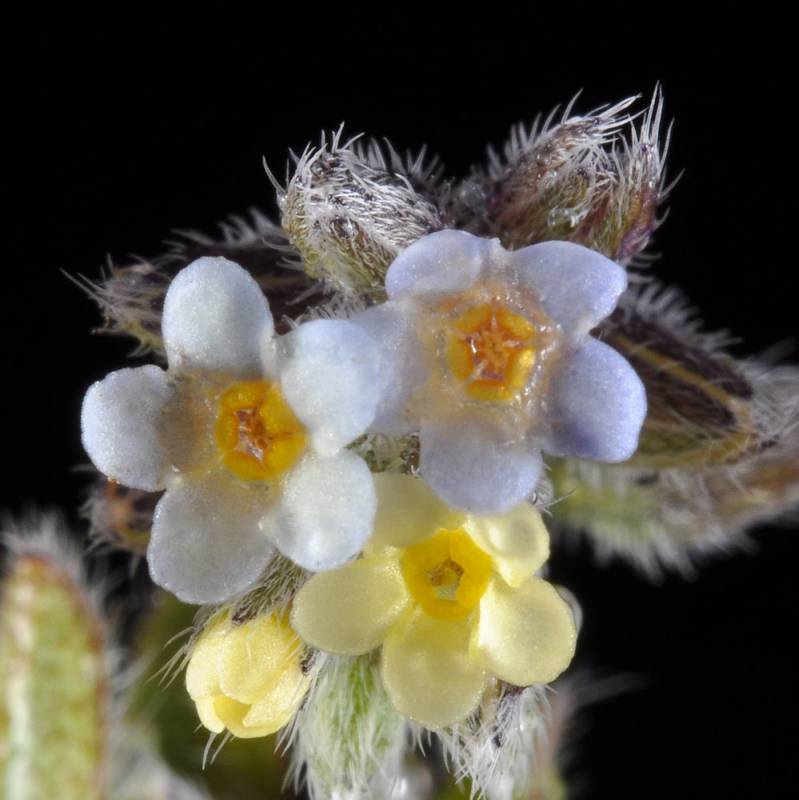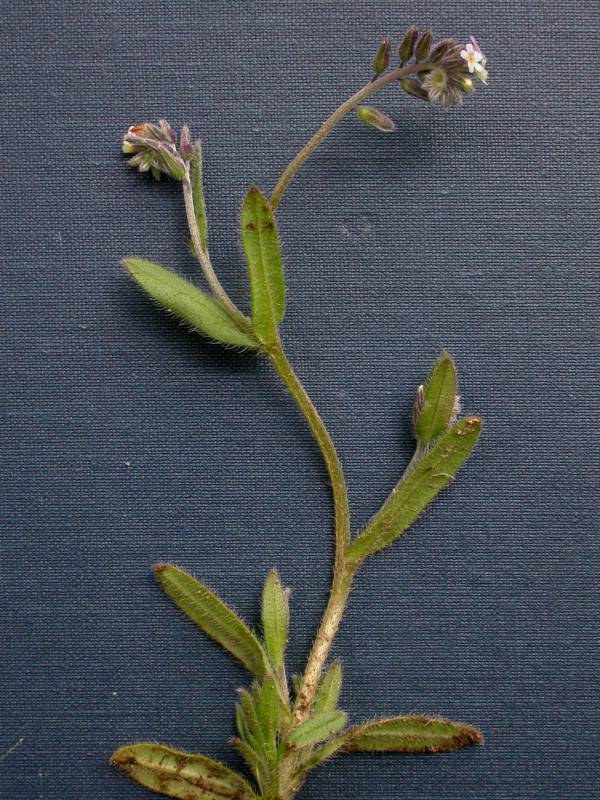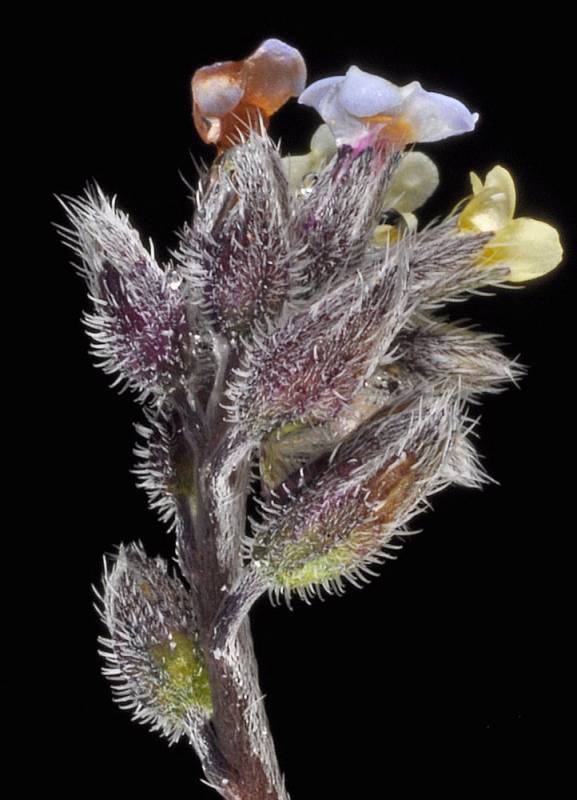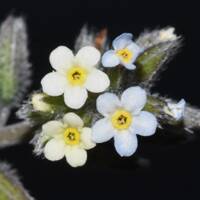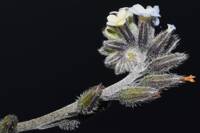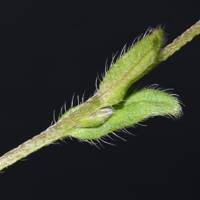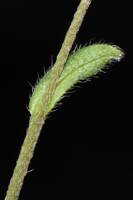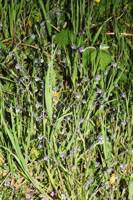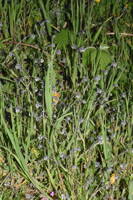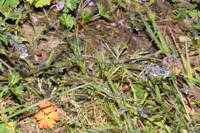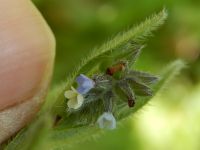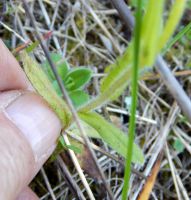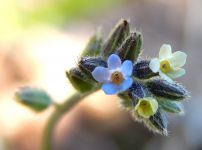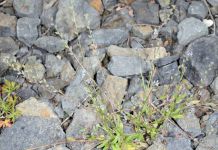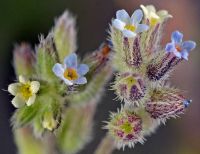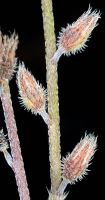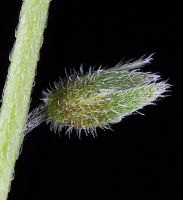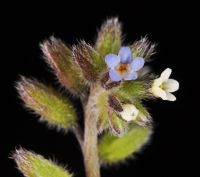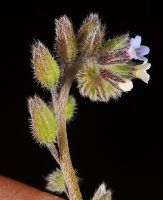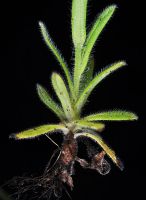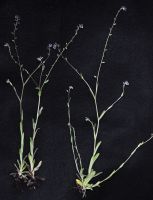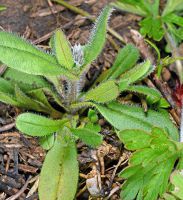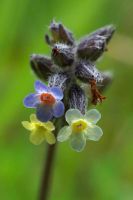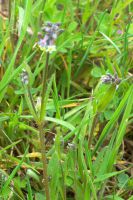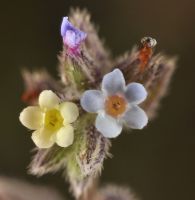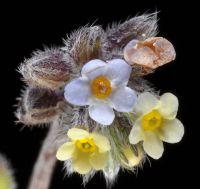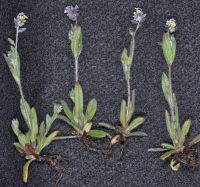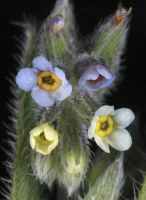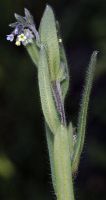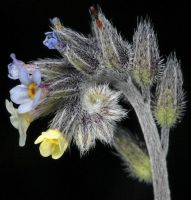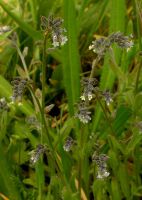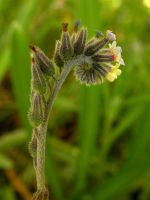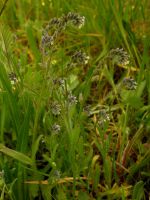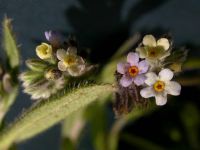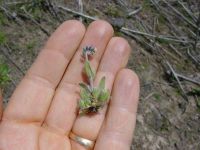Distribution: Occurring chiefly west of the Cascades crest in Washington; British Columbia to California, east to Montana and Nevada; also in eastern North America.
Habitat: Roadsides, fields, wastelots, and other dry to moist open areas.
Flowers: April-August
Origin: Introduced from Europe
Growth Duration: Annual
Conservation Status: Not of concern
Pollination: Bees, flies
Slender, puberulent, sparsely-leafy annual from fibrous roots, the simple or moderately-branched stems 1-5 dm. tall.
Leaves 1-4 cm. long and 2-8 mm. wide, the lowermost oblanceolate, the others scattered, oblong to nearly linear.
Inflorescence of nearly naked spikes, usually elongate and paired, sometimes with a bract or two near the base; pedicels 1-3 mm. long, ascending; calyx 3-5 mm. long, the tube with short, hooked hairs, the 5 lobes appressed-puberulent; corolla tube narrow, the 5 lobes abruptly spreading, the limb 1-2 mm. wide, yellow, changing to blue; hairy appendages opposite the corolla lobes at the top of the tube.
Nutlets 4, attached near the base, brownish, smooth and shining.
Publication: Syst. Veg. (ed. 15) 190 [1798]. 1797.
PNW Herbaria: Specimen records of Myosotis discolor in the Consortium of Pacific Northwest Herbaria database
WA Flora Checklist: Myosotis discolor checklist entry
OregonFlora: Myosotis discolor information
E-Flora BC: Myosotis discolor atlas page
CalPhotos: Myosotis discolor photos

